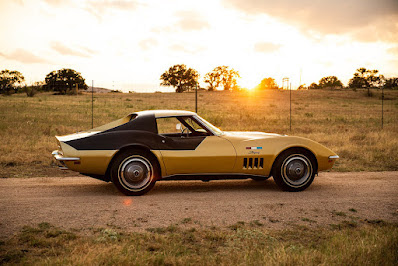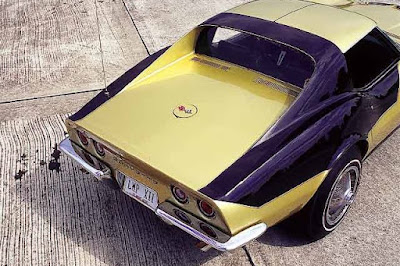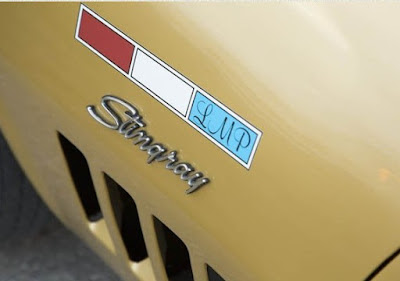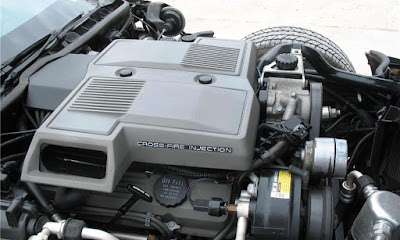The 1969 Chevrolet Nova 427 Yenko/SC, also known as the Super Nova, is said to be the rarest and fastest Yenko vehicle ever built. With only 37 of these bad boys being sold from Don Yenko's dealership, there are only about 7-10 left known to be in existence today.
Saturday, June 21, 2025
1969 Chevrolet Nova Yenko/SC: Fastest and Rarest of All Yenko Vehicles
Thursday, May 12, 2022
1969 Corvette "AstroVette" Stingray Apollo-Themed
NASA and General Motors
Executive GM Lease Program For NASA
Eventually, GM would see big benefits from being affiliated with NASA, so they went ahead and started an executive lease program for NASA employees. If you qualified for the lease program, you could lease a GM vehicle for $1 for one year. According to astronaut Alan Bean, most qualifying employees chose Corvettes, making it an interesting sight to see when you drove past the Space Center and looked in the parking lot.
Those Who Fly Together, Drive Together
All three astronauts that boarded the Lunar Module for the Apollo 12 Mission were very close, and all were car guys in their own respect. They became good friends with Jim Rathman, a Chevrolet and Cadillac dealership owner who was also known for winning the 1960 Indy 500.
Jim's dealership was located in Melbourne, FL, and its close proximity to the Space Center is what made the friendship between the three astronauts and others in NASA like Niel Armstrong possible. With "Pete" Conrad Jr., Gordan Jr., and Bean successfully completing the Apollo 12 mission, they all decided they should get matching Corvettes with some special visual upgrades to distinctively separate them from the rest of the Corvette owners and lessees.
Rare Riverside Gold Corvette Color
Ratham decided to get his friend involved, Alex Tremulis. Tremulis was an industrial designer who held automotive design positions at Cord Automobile, Duesenberg, General Motors, Tucker Car Corporation, and Ford Motor Company before later establishing a consulting firm.
Tremulis and Ratham both did have a hands-on part in the design. Ratham placed the white stripe that separates the black and the gold colors, and Tremulis designed and painted the special red, white, and blue logos on the fender.
Ratham decided to get his friend involved, Alex Tremulis. Tremulis was an industrial designer who held automotive design positions at Cord Automobile, Duesenberg, General Motors, Tucker Car Corporation, and Ford Motor Company before later establishing a consulting firm.
The Special Red, White, and Blue Emblems and The Meaning
Corvette "AstroVette" Spec.
4-Speed Manual Transmission
490 Horsepower - 460 lb.-ft. of Torque
Four-Barrel Rochester Carbrator
Hydraulic Four-Wheel Disc Brakes
Fully Independent Suspension
Optional Side Exhaust Selected But Not Installed
Performance: 0-60 mph 6.0 Seconds; Quarter-Mile 14.3 at 93 MPH
One-Year-Only Riverside Gold
Special Steel Wheel Covers
Curb Weight: 3450 lbs.
4-Speed Manual Transmission
490 Horsepower - 460 lb.-ft. of Torque
Four-Barrel Rochester Carbrator
Hydraulic Four-Wheel Disc Brakes
Fully Independent Suspension
Optional Side Exhaust Selected But Not Installed
Performance: 0-60 mph 6.0 Seconds; Quarter-Mile 14.3 at 93 MPH
One-Year-Only Riverside Gold
Special Steel Wheel Covers
Curb Weight: 3450 lbs.
Where Are The Iconic "AstroVette" Stingrays Now?
Out of the three 1969 Stingray "AstroVette" Corvettes that were delivered to the Ratham dealership for the crew of the Appollo 12 Mission, only one is known to exist. Alan Bean's Corvette is the last AstroVette that is known to exist. It was turned in after the $1, 1-year lease was up. In 1971, it showed up in Austin, TX on a GMAC car lot. It went up for auction, where a space enthusiast by the name of Danny Reed put his bid in. He initially lost the auction, but the original winner could not come up with the money, and Danny eventually won the "AstroVette."
Making the "AstroVette" Perfect
The National Corvette Restoration Society (NCRS) has given it many awards at some of the most prestigious Corvette car shows in the world.
It has been on display at NASA events, the National Corvette Museum, the Kansas Cosmosphere, Flordia Space Center, Johnson Space Center, Houston Space Center, in Washinton, and many other worthy places.
Alan Bean has since been reunited many times with his now-famous "AstroVette." Bean has become a painter since his days of walking on the Moon. A lot of his painting work has to do with space and his moonwalking, as he writes, “Our time on the Moon ended much too quickly and, in the years since then, I have created paintings to try to capture the feeling of our Apollo 12 mission, as well as all the other Apollo missions, too. It’s my hope that these paintings will help other people share in the great adventure."
Alan Bean has since been reunited many times with his now-famous "AstroVette." Bean has become a painter since his days of walking on the Moon. A lot of his painting work has to do with space and his moonwalking, as he writes, “Our time on the Moon ended much too quickly and, in the years since then, I have created paintings to try to capture the feeling of our Apollo 12 mission, as well as all the other Apollo missions, too. It’s my hope that these paintings will help other people share in the great adventure."
How to Tell If You Found One of The Lost "AstroVette" Stingrays?
There is nothing like a little Corvette and NASA history! The $1, 1-year executive lease program for the astronauts ended in 1971. Whether or not it was because the Space Program became less popular and the executive lease program was less worth it from an advertising standpoint, I'm not sure. But there was a time there for a while when being an astronaut was better than being a Hollywood star or a pro-athlete.
Tuesday, July 13, 2021
1965 Corvette 427 Big-Block "Muscle Car Era" Begins
Corvette 427 Big-Block
Back in 1965, Chevrolet decided to get innovative and give the public something they had been craving—a small sports car with a huge motor. Corvette would be the first sports car to drop a big-block motor into a sports car, and consumers were intrigued and loved it.
Making the 396 Bigger
Chevrolet created a feasible 427 cu.-in. motor for the Vette by taking the already powerful Chevrolet 396 cu.-in. motor and machining the bore and stretching the stroke of the block to a larger 427 cu.-in. This is the same way the legendary Chevrolet 327 cu.-in. engine came about. The Corvette's original 289 block was bored and stroked to a 327.
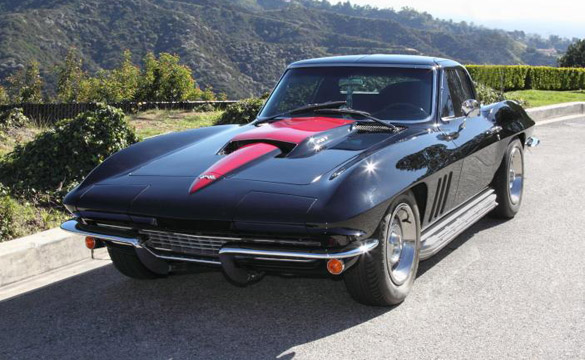 |
| Big Block Hood |
427 Big-Block Engines Were Available in Two Versions:
- L36 390 horsepower
- L72 425 horsepower
Both engines were available choices given to consumers when ordering a Vette, and both engines performed sensationally depending on what kind of fun you were looking to have.
The Extra Cost for the 427 Big-Block
- The lower output L36: $185.00 Extra
- The higher output L72: $350.00 Extra
What Came With The High Output L72
The extra cost for the L72 would get you a better-structured motor that included:
- Four-bolt mains
- Larger oil fitting ports
- Impact-extruded aluminum pistons (11.0:1) compression
- More aggressive solid lifter camshaft
- Larger rectangular port cylinder heads
- Aluminum intake
- Holly 780 CFM carburetor
- Free-flowing exhaust manifolds
- And a K66 transistorized ignition to help complement the other higher output parts.
Although the L72 was rated at a massive 425 hp, it was a well-known fact the actual horsepower output was well above that publicized rating. The reason for Chevrolet's deception on horsepower numbers was to avoid unwanted backlash from the safety legislation.
A Pleasing Power-to-Weight Ratio
The 427 big-block Chevrolet motors were a tight fit for the Corvette, but the power-to-weight ratio was very pleasing for speed freaks. Plus, the much cooler big-block hood that came with the Corvette to make room for clearance, told people what was under the hood. Chevrolet would spend about six more years using a big-block powerplant as an option for Corvette consumers.All Good Things Must Come to an End!
After 1972, the change to bring about more fuel-efficient cars would change what kind of powerplants all muscle cars would receive. This new change would eventually spawn the end of an era, the "Muscle Car" era.
Small-block 350s de-tuned and ready to do poor performance was what the American car enthusiast would have to put up with for power through the mid-'70s and '80s. In the late '80s and early '90s, change for more power started up again, and since then, there hasn't been much reason to complain.







